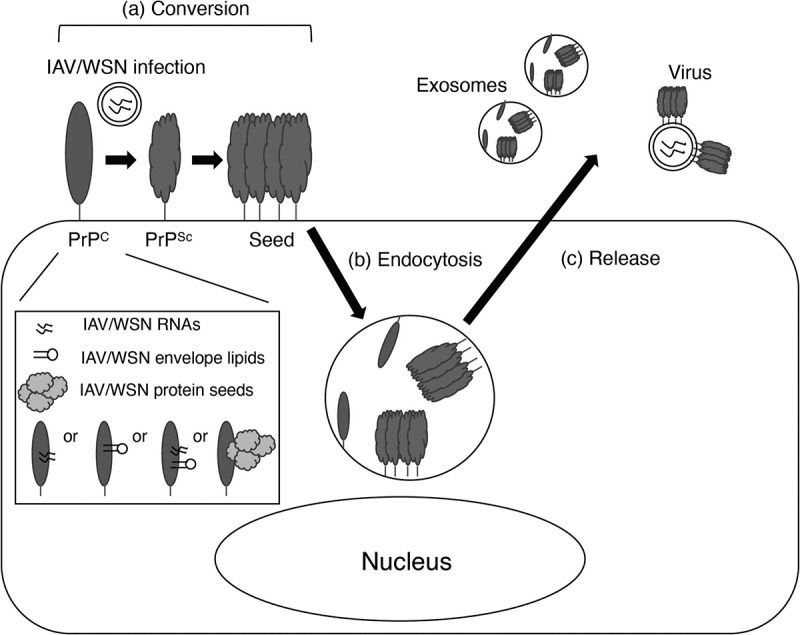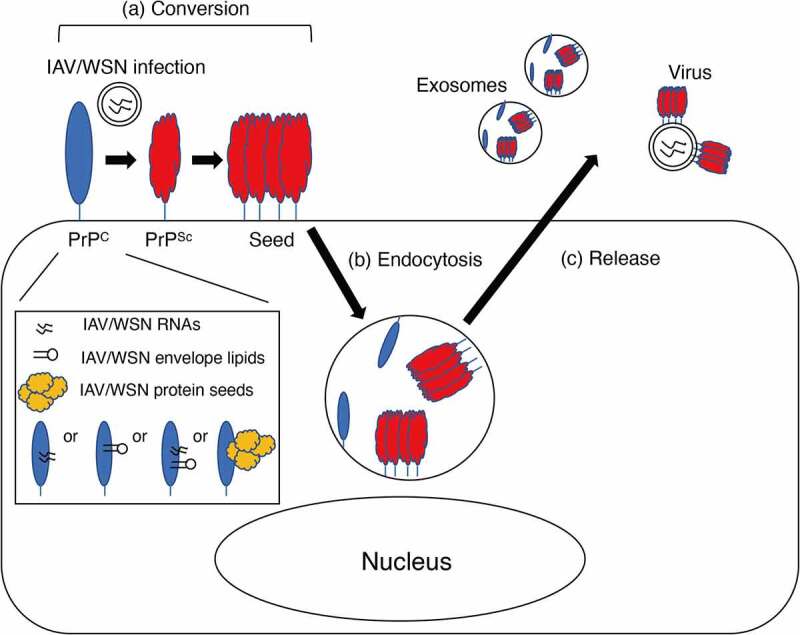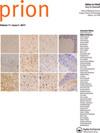发现的第一个非朊病毒病原体:嗜神经型流感病毒。
IF 1.6
3区 生物学
Q4 BIOCHEMISTRY & MOLECULAR BIOLOGY
引用次数: 2
摘要
朊病毒蛋白的细胞异构体,被称为PrPC,是一种在大脑中表达最丰富的膜糖蛋白,特别是在神经元中,其构象转化为异常折叠的淀粉样异构体,PrPSc,是朊病毒疾病(人类和动物的一组神经退行性疾病)发病的潜在机制。这些疾病的大多数病例是散发的,其病因不明。我们最近发现,一种嗜神经型甲型流感病毒(IAV/WSN)在感染小鼠神经母细胞瘤细胞后可将PrPC转化为PrPSc,并随后形成感染性朊病毒。这些结果表明,IAV/WSN是第一个能够诱导PrPC转化为PrPSc并在培养的神经元细胞中传播感染性朊病毒的非朊病毒病原体,也提供了IAV感染神经元可能是散发性朊病毒疾病的原因或与之相关的有趣可能性。本文介绍了IAV/ wsn诱导PrPC转化为PrPSc和随后感染性朊病毒的传播,并讨论了PrPC转化为PrPSc在病毒感染中的生物学意义。本文章由计算机程序翻译,如有差异,请以英文原文为准。


The first non-prion pathogen identified: neurotropic influenza virus.
ABSTRACT The cellular isoform of prion protein, designated PrPC, is a membrane glycoprotein expressed most abundantly in the brain, particularly by neurons, and its conformational conversion into the abnormally folded, amyloidogenic isoform, PrPSc, is an underlying mechanism in the pathogenesis of prion diseases, a group of neurodegenerative disorders in humans and animals. Most cases of these diseases are sporadic and their aetiologies are unknown. We recently found that a neurotropic strain of influenza A virus (IAV/WSN) caused the conversion of PrPC into PrPSc and the subsequent formation of infectious prions in mouse neuroblastoma cells after infection. These results show that IAV/WSN is the first non-prion pathogen capable of inducing the conversion of PrPC into PrPSc and propagating infectious prions in cultured neuronal cells, and also provide the intriguing possibility that IAV infection in neurons might be a cause of or be associated with sporadic prion diseases. Here, we present our findings of the IAV/WSN-induced conversion of PrPC into PrPSc and subsequent propagation of infectious prions, and also discuss the biological significance of the conversion of PrPC into PrPSc in virus infections.
求助全文
通过发布文献求助,成功后即可免费获取论文全文。
去求助
来源期刊

Prion
生物-生化与分子生物学
CiteScore
5.20
自引率
4.30%
发文量
13
审稿时长
6-12 weeks
期刊介绍:
Prion is the first international peer-reviewed open access journal to focus exclusively on protein folding and misfolding, protein assembly disorders, protein-based and structural inheritance. The goal is to foster communication and rapid exchange of information through timely publication of important results using traditional as well as electronic formats. The overriding criteria for publication in Prion are originality, scientific merit and general interest.
 求助内容:
求助内容: 应助结果提醒方式:
应助结果提醒方式:


